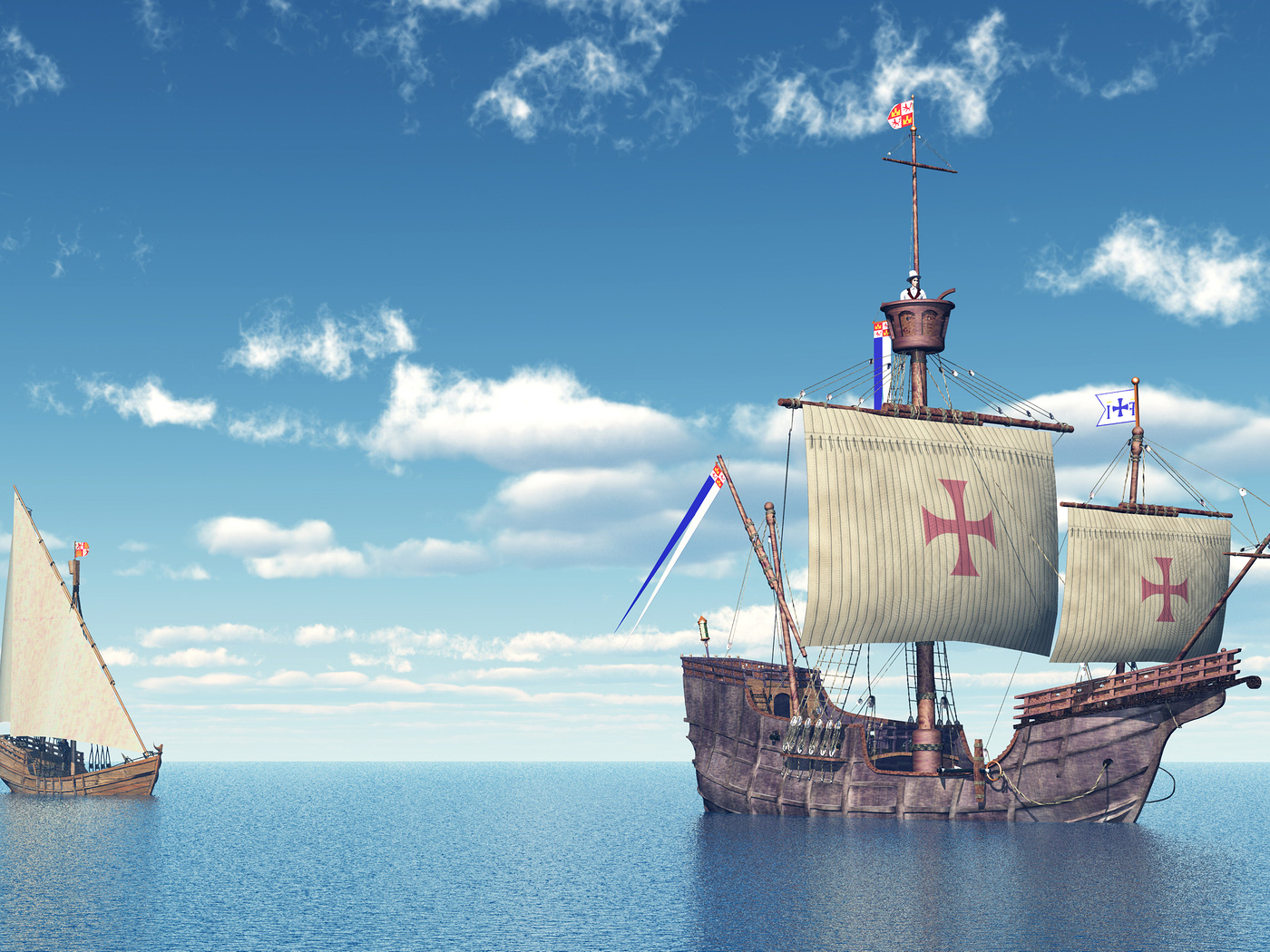¿Pero, dónde descansan los restos de Cristóbal Colón?

Por: Anakaren Dávila
El quinto y último viaje de Cristóbal Colón
Se dice que el último viaje de Cristóbal Colón lo hizo después de su muerte. Sus restos fueron exhumados y enterrados en el monasterio de Santa María de Las Cuevas, en Sevilla, después de su muerte, un 20 de agosto de 1506. Sin embargo, según la historia, su voluntad fue que se llevarán sus restos a las Américas que tanto extrañaba. Años más tarde de su fallecimiento, la esposa de su hijo Diego Colón, María de Toledo, trasladó y depositó sus restos en el presbiterio del Altar Mayor de la Catedral de Santo Domingo, isla española, cumpliendo así con la voluntad de su suegro Gran Almirante Cristóbal Colón, hecho que se ha comprobado por varios historiadores, pero hasta hoy en día se discute. Se dice que parte de sus restos descansan ahí, y otros en Sevilla. Veamos. Cuando la isla de Santo Domingo fue cedida a los franceses, sus restos fueron transportados a La Habana, Cuba. Después de que España perdió el territorio de Cuba durante la guerra española de 1898, sus restos regresaron y fueron sepultados en la Catedral de Sevilla. Nunca sabremos con exactitud, pero tristemente lo que sí sabemos es que Cristóbal Colón nunca llegó a tomar consciencia de que ¡había descubierto un Nuevo Mundo!
La Celebración de una Fusión de Culturas
Independientemente de dónde se encuentren los restos de Cristóbal Colón, el 12 de octubre de este año se cumplen 525 años desde que Cristóbal Colón puso pie en nuestro continente. Esta fecha tiene un significado muy especial para casi todos los países hispanohablantes, ya que este encuentro entre dos mundos y entre dos razas, dio lugar a nuestra América. Dependiendo de cada país de Latinoamérica, este día se celebra con nombres diferentes y se conmemora de diferentes maneras. Pero el fin de esta fiesta nacional es el mismo, celebrar la herencia hispana, la colonización y la diversidad cultural de América Latina. A pesar de que esta celebración marca una fecha en la que España empezó su conquista en el territorio indígena, es muy bonito ver que lo que se celebra no es una derrota, sino el nacimiento de un nuevo continente que se formó con una mezcla de culturas, tradiciones y costumbres.
En México, Colombia y Ecuador, esta fiesta fue denominada como “Día de la Raza”.
En Argentina, recibe el nombre de “Día del Respeto a la Diversidad Cultural”.
En Chile, se le conoce popularmente como “Día de la Raza”, pero oficialmente como “Día del Encuentro de Dos Mundos”.
En Uruguay se le conoce como “Día de las Américas”.
En El Salvador, al igual que en España, se le llama “Día de la Hispanidad”.
En Venezuela, a partir del 2002, se le cambió el nombre y ahora tiene una connotación un poco más negativa. Se le conoce como “Día de la Resistencia Indígena”.
En Estados Unidos este día se llama Día de Colón o Columbus Day.
But, where do the Remains of Christopher Columbus Rest?
By: Anakaren Dávila
Christopher Columbus’ fifth and last trip
It is said that the last trip made by Christopher Columbus was made after his death. His remains were exhumed and buried in the monastery of Santa Maria de las Cuevas in Seville, Spain, after his death in August 20, 1506. However, according to history, his will was to have his remains be translated to his beloved America. Years after his death, his son’s wife, Maria de Toledo, transported and buried his remains in the presbytery of the Highest Altar of the Cathedral of Santo Domingo – Spanish Island – fulfilling his father in law’s last will. This fact, has been corroborated by several historians, but it is still a debated topic until this day. When the island of Santo Domingo was surrendered to the French, his remains were transported to La Habana, Cuba. After Spain lost this territory during the Spanish War in 1898, his remains were taken back and placed in Seville’s Cathedral. We will never know with precision, but sadly, what we do know, is that Christopher Columbus was never aware that he had discovered a New World!
The Celebration of a Myriad of Cultures
Regardless of where Christopher Columbus’ remains rest now a day, on October 12 of this year, we will celebrate that 525 years ago, he set foot on our continent for the very first time. This date has a particular significance to almost all Spanish speaking countries because this encounter between two worlds and two cultures, gave birth to our America.
Depending on each country in Latin America, this day is celebrated with different names and commemorated in a variety of ways. But in the end, the goal is the same – to celebrate their Spanish heritage, the colonization and cultural diversity of Latin America. In spite of this celebration marking a date in which Spain started its conquest of the indigenous territory, it is nice to see that what is celebrated is not a defeat, but the birth of a new continent created by the mixture of cultures, traditions and customs.
In México, Colombia and Ecuador, this celebration is called “Day of the Race.”
In Argentina, it is called “Day of Respect for Cultural Diversity”.
In Chile, it is known popularly as “Day of the Race”, but it is officially called “Day of the Encounter of Two Worlds.”
In Uruguay, it is known as “Day of the Americas.”
In El Salvador, as in Spain, it is called “Hispanic Day.”
In Venezuela, since 2002, the name changed and received a more negative connotation. It is now known as “Day of Indigenous Resistance.”
In the United States – even though it is not Spanish Speaking – this day is celebrated as Columbus Day.

